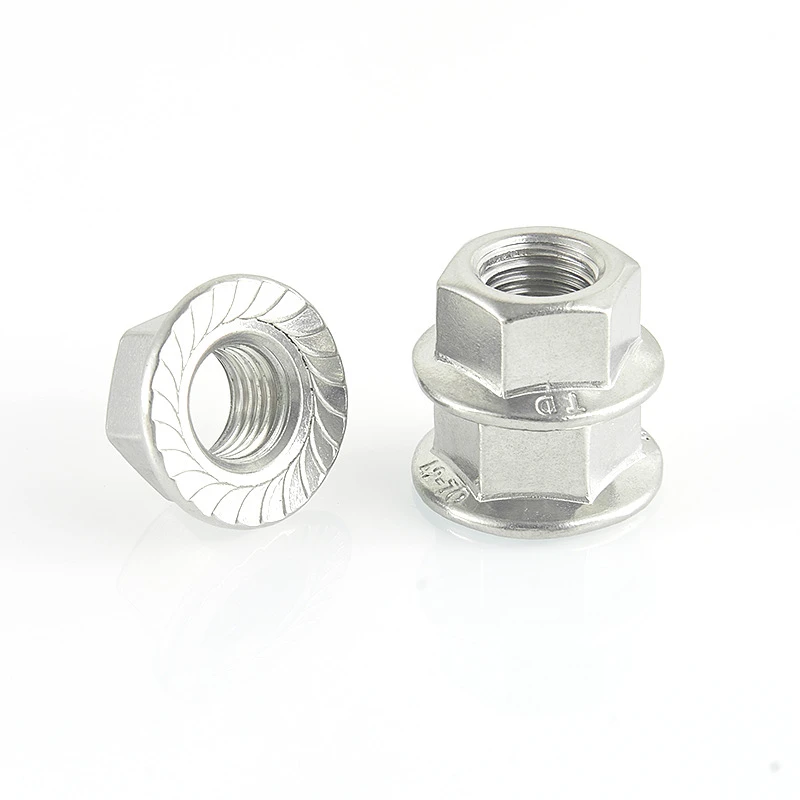

flat washer lock washer
Nov . 15, 2024 12:33 Back to list
flat washer lock washer
Understanding Flat Washers and Lock Washers A Comprehensive Guide
When it comes to mechanical engineering and assembly, fasteners play an essential role in ensuring stability and integrity. Among various fasteners, washers are critical components that come into play in numerous applications. Two popular types of washers are flat washers and lock washers, each serving unique purposes in fastening systems. Understanding their functions, applications, and benefits can help in making informed choices in engineering and DIY projects.
Flat Washers
Flat washers, as the name suggests, have a flat, disc-like shape and are typically made from materials like steel, stainless steel, plastic, or other engineered materials. The primary function of flat washers is to distribute the load of a threaded fastener, such as a bolt or screw, over a larger area. This load distribution helps to prevent damage to the material being fastened, reducing the chances of warping or crushing.
The design of flat washers varies, with different sizes and thicknesses available to accommodate various load requirements. Additionally, flat washers can also act as spacers, shims, or seals, enhancing their versatility in different applications. They are commonly used in construction, automotive, and appliance assemblies, proving their reliability across many industries.
Lock Washers
Lock washers contain unique features that prevent fasteners from loosening due to vibrations and dynamic loads. There are different types of lock washers, but they generally fall under two categories internal and external. Internal lock washers (or star washers) have prongs that dig into the surface of the materials being joined, creating a grip that keeps the fastener tight. External lock washers have an outward curve that engages the surface to which they are attached, thus providing tension.
flat washer lock washer

The application of lock washers is crucial in areas subjected to vibration, such as machinery and vehicles. Their ability to maintain joint integrity under dynamic conditions makes them indispensable in secure fittings. While using lock washers, it is vital to select the correct type and ensure proper installation to maximize their effectiveness.
Choosing Between Flat and Lock Washers
The choice between flat and lock washers depends on the specific requirements of the assembly. If the primary goal is load distribution, flat washers are the best option. They are especially useful in applications where the material may be soft or prone to deformation. On the other hand, if vibrations are a concern, lock washers should be used to ensure that connections remain secure.
In some cases, using both types of washers together can optimize fastening performance. A flat washer can be placed under a bolt head to spread the load, while a lock washer can follow it to secure the bolt against loosening over time. This combination is particularly effective in heavy machinery and high-stress situations.
Conclusion
In conclusion, flat washers and lock washers are integral components of many fastening applications. Flat washers are ideal for distributing loads and preventing material damage, while lock washers are essential for maintaining security in vibrating environments. Understanding the characteristics and best practices for using these washers can significantly enhance the durability and reliability of mechanical assemblies. By selecting the appropriate washer for your specific needs, you can ensure that your projects are executed with precision and efficiency, leading to successful outcomes in both professional and personal applications. Whether you are a seasoned engineer or a home enthusiast, mastering the use of washers is key to effective fastening solutions.
Latest news
-
Hot Dip Galvanized Bolts - Hebei Longze | High Strength, Corrosion Resistance
NewsAug.01,2025
-
High-Strength Hot Dip Galvanized Bolts - LongZe | Corrosion Resistance, Custom Sizes
NewsAug.01,2025
-
Best Self Tapping Screws for Drywall - Fast & Secure Installation
NewsJul.31,2025
-
High-Strength Hot Dip Galvanized Bolts-Hebei Longze|Corrosion Resistance&Customization
NewsJul.31,2025
-
Hot Dip Galvanized Bolts-Hebei Longze Metal Products|Corrosion Resistance&High Strength
NewsJul.31,2025
-
Hot Dip Galvanized Bolts-About LongZe|High Strength, Corrosion Resistance
NewsJul.30,2025

